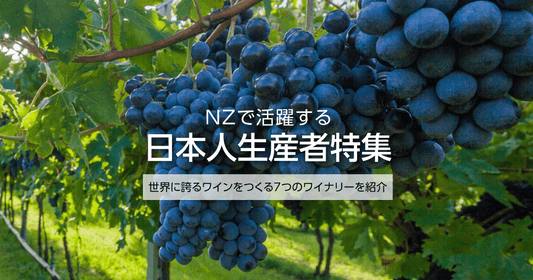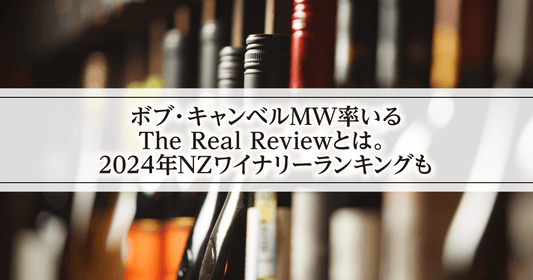Here, Iwasu, the sommelier who oversees this website, answers the questions of Nacchan and Mika, who are new to wine.
There are many tips to help you feel closer to wine, which may seem intimidating at first.
Will they be able to find a wine that they both enjoy?
First, start by choosing a wine.
In the first and second sessions, the two learned that the most important things when choosing wine are the "place of origin and variety," and this time they will be taking on the challenge of "how to read the label."
Once you understand the labels, choosing wine will be much more fun.
Still, I need to learn to read labels properly.
You don't want to be overwhelmed by the wine section.
That's right, that's right,
Let's take a closer look at the labels!

-
Natchan
I'm 29 years old and work for a web company. I'm studying wine in the hopes of being able to enjoy it more.

- Mika is 35 years old and works at an apparel company. She is getting into wine and is really interested in wine glasses.

- Iwasu is a sommelier who oversees this website. He runs a bar in Nagoya that stocks a wide range of New Zealand wines.

The wine label
- New World
- Old World
They can be broadly divided into two categories, and the way they are viewed changes depending on which country they are from .
Let's check this out first.
First, I wanted to see the country.
Yes, that's where we start.
There are many things to see in both the New World and the Old World, so the first thing you need to know is "where the product comes from."
By the way, in the wine world, this label is also called "etiquette."
Now let's take a look at the labels of New Zealand, the representative of the New World.
Check out New World wine labels

All names are fictitious.
① Wine name
②Harvest year
③Grape variety
④Place of origin
⑤ Country name
I have numbered them so please check them out.
kind~!
thank you!
The first thing you will see is the name of the wine. The name of the winery is often used for the wine name.
The next thing we know is the year the grapes were harvested , which was 2018. This harvest year is called the "vintage."
And the grape variety used for the wine. Here it says "Pinot Noir."
The region and country of production are also listed.
Hmm? Looking at it again like this, it seems simple? Isn't it?
Yep, I had a really hard time understanding it, but maybe it's actually easy!?
Right? Simple.
Additionally, New World labels are characterised by their free-form designs and unique personalities.
Now let's review.
What are the two most important things to consider when choosing wine?
Origin!
Grape varieties!
Yes, well done (laughs).
A distinctive feature of New World labels is that the origin and grape variety, which are important when choosing wine, are clearly indicated.
Yes, I think it’s easy to understand!
Even if you don't know the place name Central Otago, you can probably guess that it's a place where it's produced in New Zealand.
Yes, I think this will make it easier to find what you're looking for! I agree with Mr. Iwasu when he says, "Beginners should start with New World!"
I guess so (laughs)
Next, let's take a look at the labels of France, a country with a long history of wine.
Let's take a look at the labels from France (Bordeaux region)
Here you go.
The label for Bordeaux, a major wine-producing region in France, looks like this.

All names are fictitious.
There's suddenly a lot of text...
And cursive! (sigh)
hard~
Yes, it's French (laughs).
Again, I've numbered them here for ease of understanding.
①Harvest year
② The name of the chateau or domaine (wine name)
③ Rating
④AOC
⑤ Bottler
⑥Country of origin
⑦Alcohol content
⑧Capacity
First of all, the place of origin. Isn't there a place of origin in any of ① to ⑧?
That's what you think.
Especially in France, if you don't have prior knowledge, it's difficult to know where the place of origin is written.
I think that beginners like you two would have no idea which country the product is from just by looking at this fictitious label.
It's not consumer friendly!
The country of origin for ⑥ says “Produced in France,” so I know it’s made in France, but…
Other than that, I have no idea what the points that would identify the place of origin are.
That's right.
When drinking French wine, it's important to know this first.
French wine is a little complicated, with many rules
The answer is written in number 4 .
In France, there are laws governing not only wine but also local specialty products, such as AOC (Authorized Appellation of Certification) and AOP (Authorized Appellation of Certification ...
Appellation, place of origin and control.
So, first remember that the place of origin will be between A and C.
This is the most important thing to know about French wine.
So first, should I look for the letters AOC or AOP on the label?
Yes, that's right.
You can see that it says "Médoc" here.
So, if you know that there is a place called Medoc in France, you can just Google Medoc. Where is it?
Google is good!
Of course (laughs)
If you search on Google, you will find out where Médoc is. You will also know that it is a region in France.
Next is the "variety", but there is no section on the Bordeaux label, right?
Is this one hiding somewhere?
I'm not sure about the variety either...
I can't tell anything from the label at the moment!
That's true (laughs).
For example, when it comes to Japanese rice, there is no law that says that only Koshihikari can be grown in Uonuma, Niigata.
It would be a problem if that happened.
However, in France, there is a law that says , "If you want to use the name of a place in the Bordeaux region of France called Médoc, you can only use this grape variety."
What is that...?
That's amazing...!
That's how strict the French government is in its legislation regarding wine and local specialties.
For example, when it comes to red wine grape varieties, the varieties that can be used are determined as Cabernet Sauvignon, Merlot, Cabernet Franc, etc.
So then...
Umm, what will happen? (laughs)
When you do that, you understand that it's a Médoc wine, and that's the kind of taste it has.
This is why French wines generally do not state the grape variety on the label.
It's too difficult for beginners like us...
That's right.
If you want to know about French wine, you first need to learn the names of the regions between the appellation and the controle, and then find out what the characteristics are there. That's how you get a sense of the individuality of the region.
So...well, French wine takes quite a long time.
I see.
So, as long as the place of origin is written on the label, there's no need to specify the grape variety.
You can understand it without me having to write it, right?
It feels like they're saying, "Everyone knows that, right?" (laughs)
Now I understand the meaning of "French wine is essential to study" ...

New World labels are easy to understand!
I also realized how easy it is to understand New World labels. It feels like the bar for wine has been lowered!
I can read English to some extent. I'm starting to feel like I can do it.
That's good, that's good (lol)
New World labels are generally written in English and are simple. As long as you check carefully what is written, I think even beginners will find it easy to buy.
Once you have a good grasp of how to read labels, you will gain more experience and gradually become able to read the wines that are on sale.
This makes choosing wine much more fun!

Labels are not something to read, but rather "indicate what you like"
One thing to keep in mind here is that it is impossible to perfectly interpret the label .
So, what is the purpose of labels? At first, it's best to think of them as being there to help you find the bottle that suits your taste .
It's a big hurdle to go to a wine shop and understand the meaning of each and every label.
First, the region and grape variety.
Take a good look at these two points and remember them.
Ok, let's start by buying some New Zealand Sauvignon Blanc!
Wine is getting fun!
- The key to finding a wine that suits your taste is the region of origin and the variety.
Find out where the wine was made and what grapes it is made from. - The quickest way to learn about wine is to compare different varieties at once .
For white wine, start with NZ Sauvignon Blanc, and for red wine, start with NZ Pinot Noir.
Thank you, Iwasu-san!
Now I want to hear about how to drink wine!
Yes, yes, anytime~
Yes, yes, anytime~
The end.
Next, check out the first episode of "Drinking Wine"!






